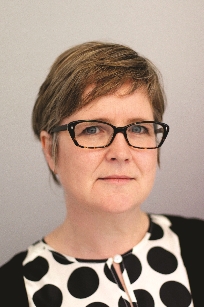Finance regime unchanged for first six months
Initially, NHS England and NHS Improvement said that the regime, which is based on centrally calculated block contracts, topped up to cover providers’ Covid costs, would be used for the first three months. However, guidance on finance and contracting arrangements said block payment arrangements will remain for six months between NHS commissioners and NHS provider organisations. Signed contracts are not needed between these bodies during this period.
During the first six months of the financial year, systems will receive funding envelopes that will include adjusted clinical commissioning group allocations, a system top-up, and a fixed Covid-19 allocation. The funding will be based on the system envelopes for the second half of 2020/21 modified to reflect known pressures and policy priorities, such as inflation and mental health service development plans.
Block payments to NHS providers in the local system should reflect increases in the system envelope, while those to providers outside the system should be uplifted by 0.5%.
The guidance says in the first six months (H1) the NHS will be supported with funding recently announced by the chancellor. He has allocated a total of £8.1bn to cover additional Covid costs – £1.5bn in November and £6.6bn in the recent Budget – and £7.4bn of this funding will be available in H1.
Other funding will also be available, including £1bn for elective recovery and £500m for mental health recovery across 2021/22. Systems will be able to access these funds, as well as growth funding for primary care and community services.
Covid impact
Acknowledging the impact of Covid-19 on services funded through non-NHS income streams, additional fixed income support will be issued. Systems are expected to recover their positions with this funding, with no other funds available in relation to non-NHS income support.
As noted in this week’s tariff consultation document, there will be an annualised efficiency requirement of 1.1% for 2021/22 consultation prices. Over H1, a 0.28% efficiency requirement has been applied to the NHS provider block payment.
The national bodies will also support financial recovery overall and begin to recover the financial positions of systems that received more funding than a sustainable position in 2020/21. Systems that carried forward 2019/20 financial trajectory gaps, which were funded through the arrangements for the second half of 2020/21, will be subject to targeted reductions in system top-up funding.
NHS England and NHS Improvement have generated default organisational plans for individual organisations based on Q3 2020/21 actuals. The guidance says this has produced affordable positions for most systems. All systems are expected to plan for a balanced position and those showing a deficit at Q3 2020/21 must submit a system plan template showing an improvement to a breakeven position.
CCGs are advised to set aside a 0.5% of their allocation as a contingency to mitigate expenditure risks. CCGs can decide not to set up a contingency fund if it is not considered affordable or necessary, but this will be subject to regional assurance.
NHS chief executive Simon Stevens told today’s NHS England and NHS Improvement joint board meeting that the planning guidance and NHS mandate, which was also published on 25 March, meant the NHS was now sure of its funding. ‘We have funding certainty for our Covid costs for the first half of the year. I personally felt it was very important we had that planning certainty. We have extra funding that we will be deploying to tackle long waiting lists. We are doubling down on our investment guarantees that we have made for mental health services and GP and community services, and there is additional investment in maternity services as well.’
NHS England and NHS Improvement chief financial officer Julian Kelly (pictured) said the guidance set out the steps needed to recover services, particularly in elective activity but in other sectors as well. ‘The steps we are going to take are not just to go back to what we have done before, but to build on what we have achieved through Covid in terms of the transformation of outpatients, and the much greater use of virtual consultations in secondary and primary care, and indeed mental health. We’ve seen the need to double down on some of the investments we had already planned, such as extra diagnostic capacity to improve our cancer outcomes or the expansion in mental health.’
Though the guidance largely covers priorities for the first six months, there were ‘clear commitments for additional funding into mental health, primary and community care and some other transformation funding for the whole year, so we really can get on with confidence with some of the service expansion we had planned, and which is necessary’, he added.
Staff focus
The planning guidance set out a number of priorities, including staff wellbeing, recruitment and retention. Recovery activity would be phased to allow staff to recharge after a gruelling 12 months.
Employers must encourage staff to carry over unused annual leave, and offer flexibility to allow them to take leave or buy back unused leave. The planning guidance said system financial performance assessment will exclude higher accruals for unused annual leave in 2020/21. Mr Kelly said the guidance would allow employers to carry over unused leave, and staff to take leave they are due.
As well as continuing to address Covid and rolling out the vaccination programme, the NHS must prioritise service transformation building on learning from the pandemic, accelerate the restoration of cancer and elective care, and manage increasing demand for mental health services. Mental health spending will be set out over the full 12 months and system plans should reflect this. Other priorities include expanding primary care, reducing health inequalities, cutting inappropriate A&E attendance by developing community and urgent and emergency care, and working collaboratively across systems.
Saffron Cordery (pictured), deputy chief executive of NHS Providers, said the guidance provided much-needed clarity, and it was good that staff wellbeing would be at the centre of service recovery and transformation. However, calls for systems to develop local workforce supply plans would not work without national funding for recruitment and retention initiatives, underpinned with a fully costed and funded national workforce plan.
She added: ‘The planning guidance provides much needed clarity for trusts and their partners for the year ahead. However, it is important to remember that funding has only been allocated for the additional costs of Covid-19 for the first half of the year. This will need to be kept under close review as the true costs of the pandemic become clear.
‘The operational burden that trusts and local systems are still bearing is huge. The planning guidance rightly seeks to establish priorities, but given the immediate pressures and the big task of recovery, the health and care sector will continue to face considerable challenges for the year to come.’
Systems have been asked to return draft summary plans by 6 May, with final plans due on 3 June, produced through partnership working and with clear and transparent triangulation between commissioner and provider activity plans.
The NHS mandate sets out NHS England and NHS Improvement’s objectives and funding for 2021/22. It also details commitments from the NHS long-term plan and the government’s election manifesto, and associated metrics. The metrics on the commitment to achieve financial balance includes measuring the number of systems in financial balance, as well as overall balance, the number of organisations in balance and the rate of productivity growth. Further metrics for remaining financial tests are due to be agreed by July.
The HFMA has produced a summary of the operational planning guidance, which HFMA members can access here.
Month 10 financial position
The financial impact of Covid on providers reached £6.3bn at the end of month 10, according to NHS England and NHS Improvement chief financial officer Julian Kelly.
In a paper on the month 10 financial position tabled at the NHS England and NHS Improvement joint board meeting this afternoon, Mr Kelly said the costs included an estimated £2.1bn in lost income, £2.1bn of additional pay costs, and £2bn of other Covid costs. However, this has been offset by reductions in spending of around £1bn in the first six months of the year.
Clinical commissioning groups incurred additional Covid costs of £2.5bn in the first 10 months of 2020/21. NHS England and NHS Improvement central admin and programme costs had a year-to-date underspend of £98m, due to vacancies, programme deferrals, and costs being met from other budgets as part of the interim financial regime.
The additional spending in commissioners and providers does not include the added costs of personal protective equipment and the Test and Trace programme, which are funded directly by the Department of Health and Social Care.
The additional expenditure in month 10 due to Covid-19 was slightly higher than previous months because of the increase in the vaccination programme. Mr Kelly said net expenditure at the end of January stood at £117.8bn. This equated to an additional year-to-date funding requirement of £12bn – in previous months the additional requirement averaged around £1bn.
He added the full-year forecast is an additional £19bn over the original 2020/21 funding mandate, relating to the Covid response, including the likely full-year impact of annual leave to be accrued by employers as well as other non-recurrent impacts.
Related content
We are excited to bring you a fun packed Eastern Branch Conference in 2025 over three days.
This event is for those that will benefit from an overview of costing in the NHS or those new to costing and will cover why we cost and the processes.